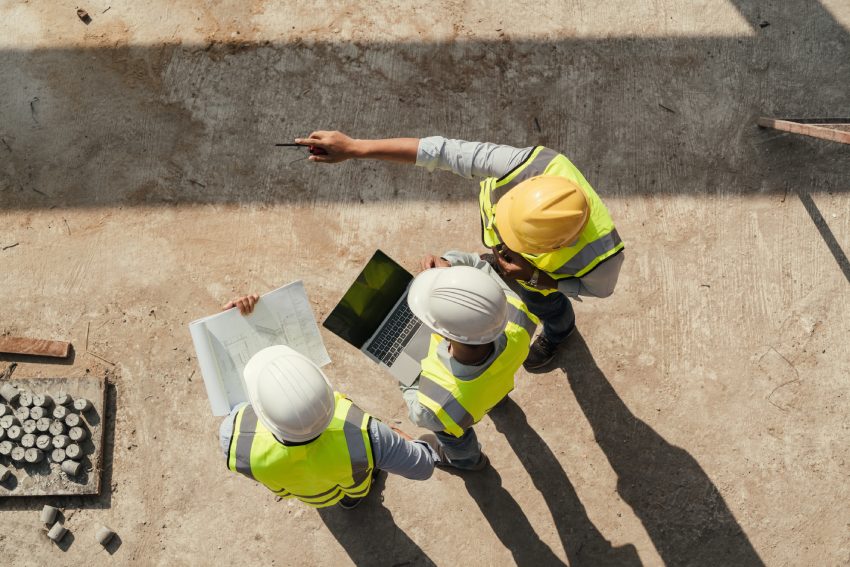Why Sustainability in the Construction Industry is Important
The construction industry has a sustainability problem, and pretending it doesn’t exist won’t make it go away. Buildings account for nearly 40% of global energy consumption and 36% of carbon dioxide emissions. That’s not a rounding error—it’s a fundamental challenge that affects every project and every material choice.
But here’s what’s frustrating: most sustainability discussions focus on feel-good measures that don’t address the real issues. Solar panels and green roofs get all the attention, while the boring stuff that actually matters—like material selection and building envelope design—gets ignored.
The truth is that sustainable construction isn’t just about saving the planet. It’s about building better, more cost-effective buildings that perform reliably over their entire operational lives.
What is Sustainablity in Construction?
Sustainability in construction means designing and building structures that minimize environmental impact while maximizing long-term performance and economic value. It’s not just about using recycled materials—it’s about thinking systematically about how buildings affect the environment throughout their entire lifecycle.
The lifecycle approach is what separates real sustainability from greenwashing. A material that requires massive energy inputs to manufacture might not be sustainable even if it’s made from recycled content.
Sustainable construction considers embodied carbon—the emissions associated with manufacturing, transporting, and installing building materials. For many buildings, embodied carbon represents 20-50% of their total lifetime carbon footprint. You can’t achieve real sustainability without addressing embodied carbon.
Material selection plays a crucial role. Materials like gypsum boards offer advantages because gypsum is naturally occurring, requires less energy to process than many alternatives, and can be recycled at the end of the building’s life.
Why is Sustainability Important in Construction?
Climate change is forcing the construction industry to confront its environmental impact. Extreme weather events are becoming more frequent and severe, affecting both construction operations and building performance. Buildings need to be more resilient while consuming fewer resources.
Regulatory pressure is intensifying globally. Governments are implementing stricter building codes, carbon pricing mechanisms, and mandatory sustainability reporting requirements. Companies that don’t adapt risk being excluded from major projects and markets.
Economic benefits are increasingly compelling. While sustainable construction may require higher upfront investments, the long-term financial returns are substantial. Energy-efficient buildings have lower operational costs, and green buildings typically command higher rents and sale prices.
Market demand is shifting toward sustainability. Corporate tenants are increasingly requiring green building certifications, and investors are incorporating ESG criteria into their decision-making processes.
The Benefits of Sustainable Construction for the Long-Term
Energy cost savings represent one of the most significant long-term benefits. Sustainable buildings typically consume 20-30% less energy than conventional buildings, translating directly to reduced utility costs over the building’s operational life.
Property value appreciation is well-documented. Green buildings consistently command higher rents, have lower vacancy rates, and sell for premium prices. This value premium tends to increase over time.
Risk mitigation is crucial but often underestimated. Sustainable buildings are more resilient to climate change impacts, regulatory changes, and resource price volatility. Buildings designed for extreme weather events are less likely to suffer damage.
Health and productivity benefits compound over time as building occupants experience better indoor environments. Improved air quality, natural lighting, and thermal comfort contribute to reduced sick days and improved cognitive performance.
How to Achieve Sustainablity in Construction
Achieving sustainability requires a systematic approach that begins in the design phase and continues through construction, operation, and eventual building end-of-life. The most effective strategies integrate sustainability considerations into every aspect of the project.
Design for efficiency should be the foundation. This means optimizing building orientation to maximize natural lighting and minimize energy consumption, designing building envelopes that minimize heat transfer, and creating layouts that promote natural ventilation.
Material selection is critical. Prioritize materials with lower embodied carbon, higher recycled content, and longer lifespans. Local sourcing reduces transportation emissions and supports regional economies.
Energy efficiency should be addressed through both passive and active strategies. High-performance insulation, efficient windows, and air sealing reduce energy loads, while efficient HVAC systems minimize energy consumption.
Companies like Mada Gypsum are leading this transformation by developing products that make sustainable construction more achievable. By choosing materials that prioritize sustainability, construction professionals can build projects that meet today’s needs while preserving resources for future generations. Contact us for more information about ceiling systems and more.

